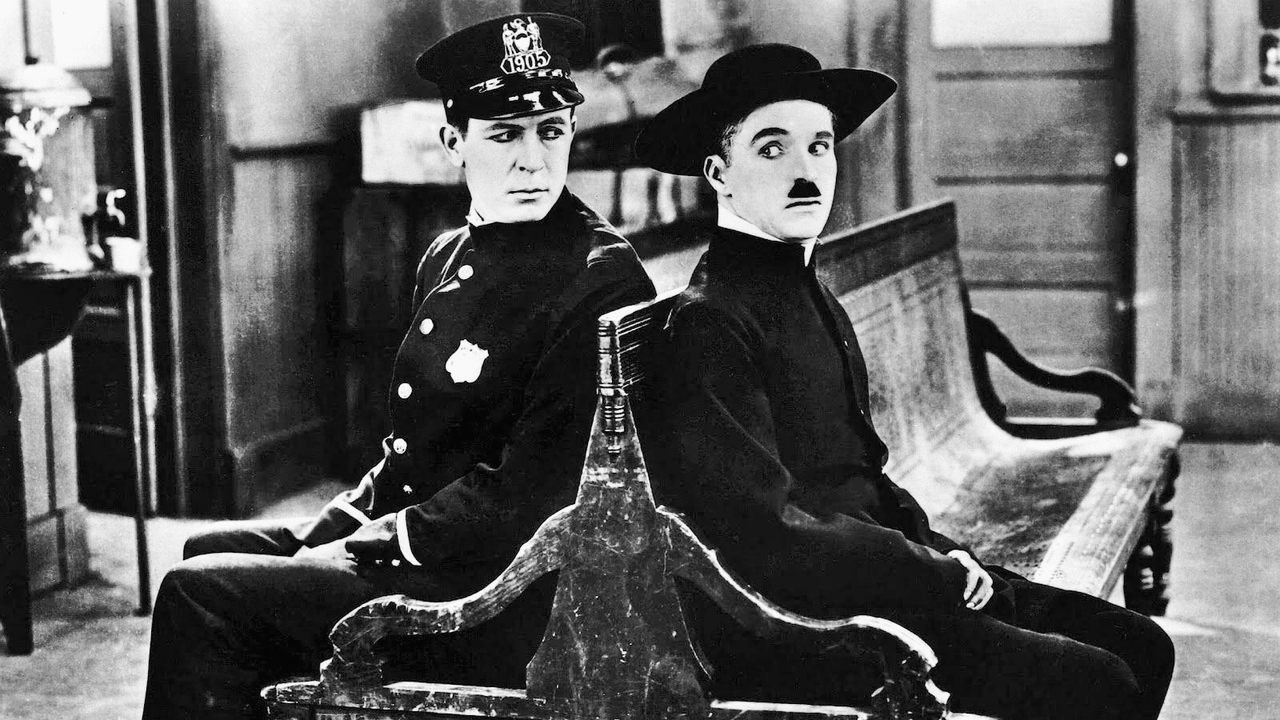

1923's "The Pilgrim" put an end to a significant chapter of Chaplin's career. It was the last silent short film he did after his career centered around these for almost a decade, easily the most prolific phase of his life. In the 20 years afterward, he directed all his notable full feature films he is most know for these days. With "The Pilgrim", Chaplin surely went out on a high note. It's one of his longest short films and also the last one with his long-time partner Edna Purviance. It was almost too long for his own good. He never really managed the perfect balance between drama and comedy here, one of the strongest achievements in his feature films. It occasionally drags, but all in all it's not bad. Of course it has its moments, like Chaplin looking at the girl and then in his very own shy fashion into the camera when he's going through albums with the old lady. The flower-picking ending is truly hilarious as well. And there's quite some significance to the ending about Charlie and film entering new territories (Mexico) with the rising significance of sound. Decent job from everybody involved and it's even better if you watch the restored version including Matt Munro's beautiful rendition of "Bound for Texas" and a pretty good score beyond that too.
... View MoreChaplin edited, wrote, produced, and directed this final film he made for First National Pictures. It was also the final film he made with Edna Purviance playing a major role. Chaplin plays an escaped convict who happens upon a town near the Mexican border. The town's residents mistake him for the new minister they're expecting. It's another mistaken identity plot with Chaplin poking some fun at religion. It was surely as taboo of a subject to address on film then as it is today, if not even more so. Chaplin finds himself in a bind when he falls for Edna Purviance in the town but is simultaneously forced to join with a former cell-mate to rob the town's church. Meanwhile, Chaplin must dodge lawmen who may recognize him as an escaped convict. Chaplin has hilarious scenes trying to uphold the sanctity of his new title while fighting the pickpocket in the minister's house with guests present. That particular scene is a visual metaphor for Chaplin's character's battle with his old and new lives. Chaplin follows the pickpocket to a gambling hall where he mischievously reacquires the church's money in disguise while the townsfolk discover who Chaplin really is. Chaplin is humanely allowed to leave town, but he is set upon by Mexican bandits and wants to return at the fadeout. It's odd Chaplin never took on religion previously, since he wasn't particularly fond of organized religion in real life. This film was later used against Chaplin by overzealous HUAC supporters resulting in his banishment from the United States, a sad and pathetic chapter in American history. **1/2 of 4 stars.
... View MoreI've only seen this as the 40 minute reissue with Matt Monroe warbling Chaplin's song 'Bound for Texas' all the way through it. There's nothing at all wrong with the tune or the singing, except that it comes on too often and makes you realise just how ordinary the rest of the score is. Maybe the DVD's better - maybe!The film itself is a pleasure, not a joy, but it does have some typically wonderful Chaplin moments in it: The jig with the collection-boxes, the cake/hat, the sticking on his chin of the little 'beard' to make him look tough (what an expression he put on as well!) The reissue moves swiftly along, and you're borne with it until you sadly realise that it's over - too fast. Personally, the storyline is too thin and the gags though numerous are just too disparate and inconsequential to put this amongst his very best, but on a good second level. Charlie's maturer and lesser efforts like this are still towering achievements in comparison with most of his contemporaries and successors best.
... View MoreThis short comedy has some funny moments and a few observations about human nature thrown in. It is one of Chaplin's more popular shorts, due to the good slapstick sequences, even though it might not have as much substance as some of his other features.At the beginning, Charlie gets mistaken for a town's new preacher, and starting with that, he finds himself in some increasingly complicated situations. There are some good gags and some funny moments that arise as "The Pilgrim" tries to figure out what is expected of him, and tries to fit in.Edna Purviance is engaging as usual, and Syd Chaplin gets a chance to show his versatility, so both of them add something. A few of the scenes are drawn out a little too long, but in general it's a pretty good feature that most Chaplin fans will enjoy.
... View More